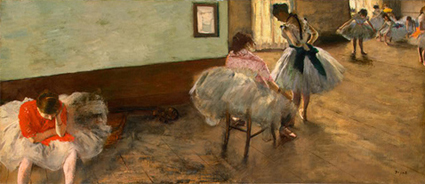Autumn preview of art exhibitions. By Andrew Graham-Dixon.
One spring morning in 1877 a French journalist called Francois Thiebault-Sisson bumped into Edgar Degas at a dance rehearsal at the Paris Opera. He went on to write an article about the artist’s obsession with the ballet, noting that Degas attended rehearsals before lunch and then performances in the evening, focussing on different aspects of the dance at each different time of day: “Degas comes here in the morning. He watches all the exercises in which the movements are analysed, he establishes by successive features the various gradations, half-tempos, and all the subtleties. When evening comes, at the performances, when he observes an attitude or a gesture, his memories of the morning recur, and nothing in the most complicated steps escapes him ... he has an amazing visual memory”.
“Degas and the Ballet: Picturing Movement”, which opens at the Royal Academy of Arts on 17 September, promises to be one of the outstanding exhibitions of the autumn. During the course of his long career, Degas produced more than one and a half thousand works of art – drawings, pastels, paintings and sculptures – inspired by dance. The Royal Academy show draws together more than eighty of the finest examples, including his unsettlingly morbid, mannequin-like sculpture, Little Dancer Aged Fourteen, as well as many of his most radiant depictions of the gaslit spectacle of the ballet itself. The exhibition promises to explore the painter’s vexed and ambivalent attitude to the young, struggling dancers of the principal French ballet: a complex mixture of compassion and fascination for the so-called “rats of the Opera”, struggling to make their way in the ambiguous demi-monde of Paris by night. It will also examine Degas’s fascination with the depiction of movement, placing his daringly cropped compositions beside contemporary...


